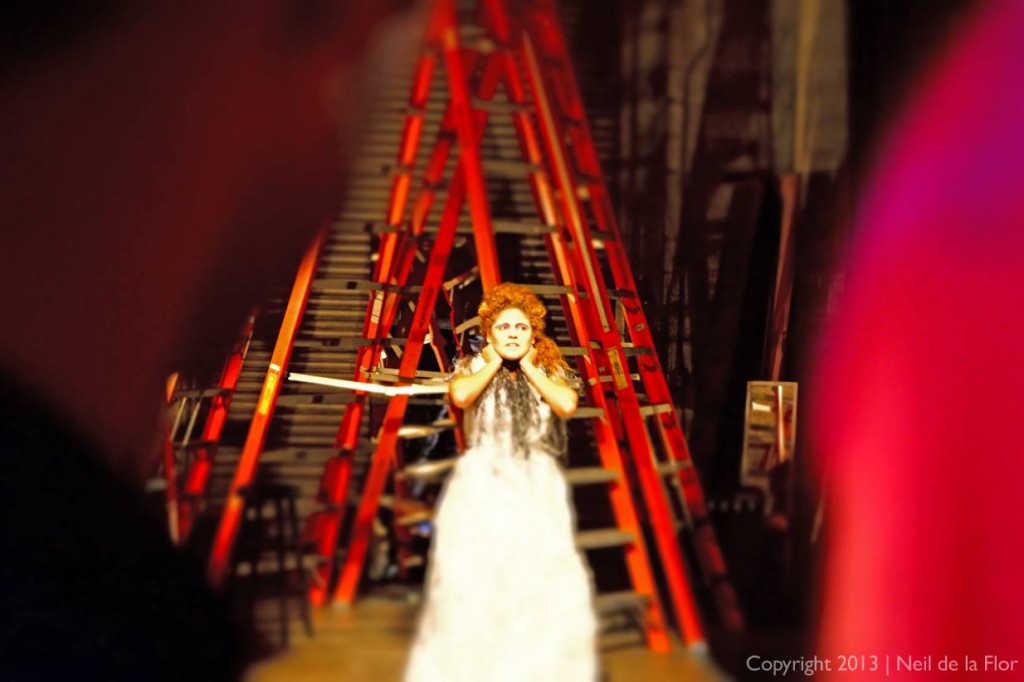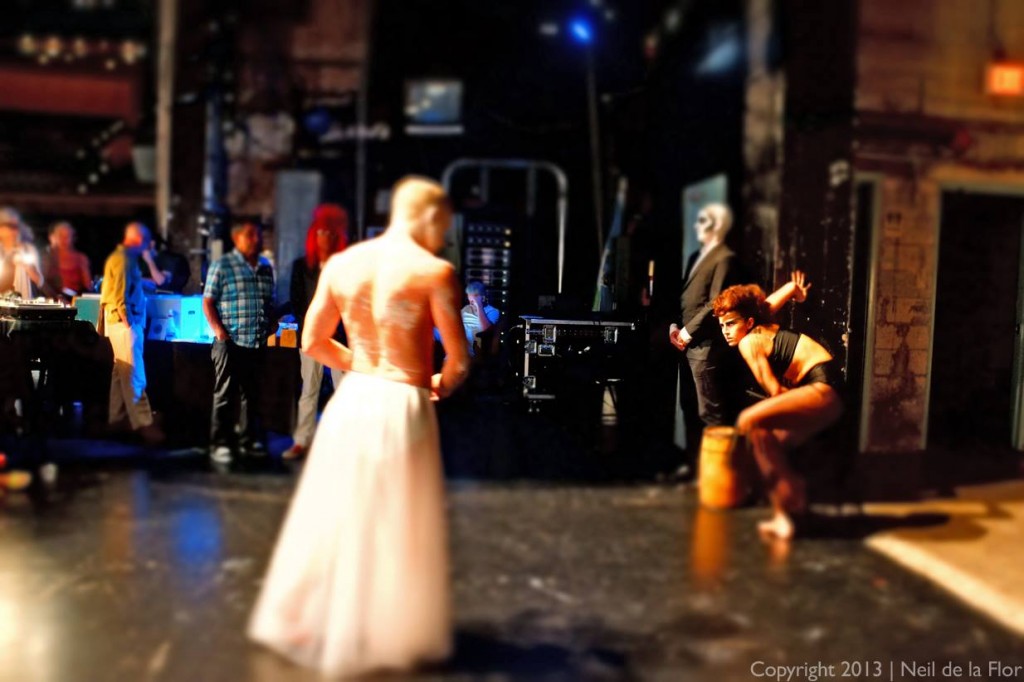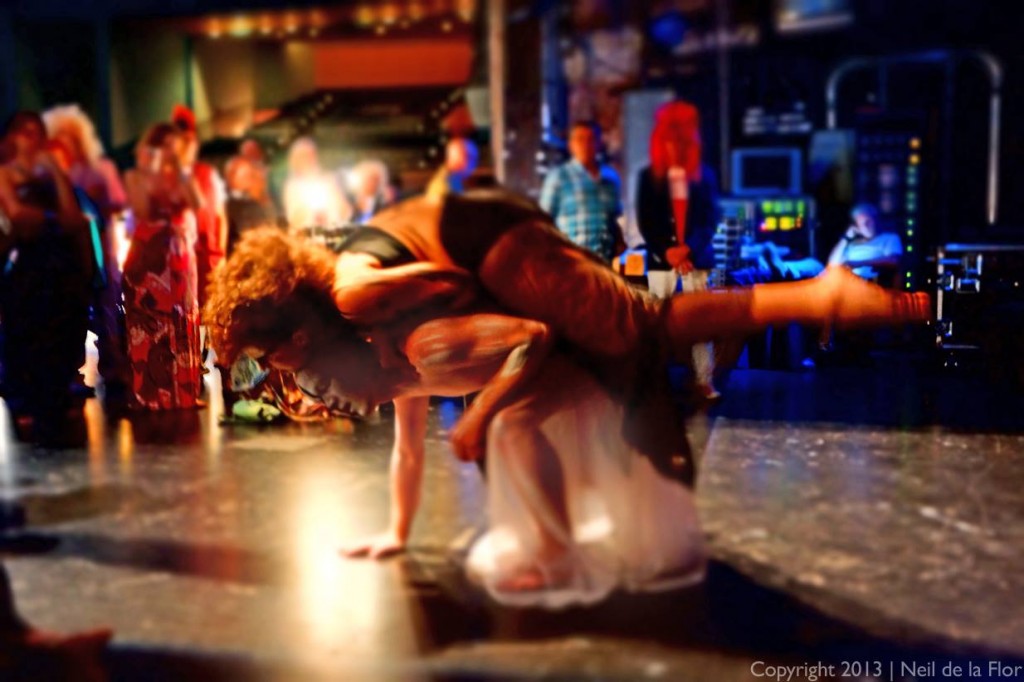
Not just flailing around like a mad woman: an interview with Marissa Alma Nick
Marissa Alma Nick takes on Edgar Allen Poe’s “The Cask of of Amontillado” in “Cask,” a risky surrealist performance piece set to open next Thursday and Friday (October 24-25) at 9 p.m. at the Miami-Dade County Auditorium. Taking on iconic works by iconic writers, such as Poe, can prove fatal when adapting them for live theater, yet Nick’s vision re-imagines Poe’s classic story and makes it her own. Nick’s “Cask,” which began during her studies at the University of South Florida when she first changed the gender of one of the main characters, reveals through experimentation an alternative, yet equally creepy interpretation of Poe’s story. When I visited the equally creepy Edgar Allen Poe museum in Richmond, Va., we found an open door that led us into a basement. It had been left open by one of the groundskeepers. It wasn’t part of the exhibition, or maybe it was, either way we climbed down the stairs and stood in total blackness—that kind of darkness where you lose perspective and the person next to you becomes whatever monster you imagine him to be. Nick’s “Cask” will attempt to do the same by taking the audience into the pit of Poe’s dark and terrifying world where human psychology and our greatest fears become the monsters we have to face.
What attracted you to Edgar Allen Poe’s short story “The Cask of Amontillado” and what role does the story play in this piece?
I’ve always had an attraction to the world of macabre, something about finding the beauty in our natural darkness has always seemed necessary to me. Edgar Allen Poe was someone I was reading often in college. His sublimely dark storytelling fascinated my imagination. During my senior year at USF we were studying narrative in dance—”Swan Lake,” “Sleeping Beauty,” “Romeo and Juliet”—adaptations of classics. My senior thesis evolved into a study on a narrative interpretation of the “Cask of Amontillado”—a story I was always drawn to due to the cerebral mystery of the way in which the story is told.
Five years later, I decided to reexamine this concept piece because of Adal Delgados of the 6th Street Container Alternative Art Space, when the opportunity presented itself to create a piece there. It just naturally seemed fitting due to the attic feel of the space and time of year: Halloween. Edgar Allen Poe was totally in the air and “Cask” was on my mind.
In this adaptation, the short story plays a driving force. The two main characters, Montresor and Forunato, still encounter each other in the same manner as the original, only I play with past tense instead of present tense, and in my version the cask plays a much more significant role than in the original. It is how Montresor, who is a woman in my version, kills Fortunato, as opposed to the original murder with shackles and a brick wall.
Why turn Montresor into a woman?
Montresor became a woman because I’m a woman, and I always imagined this character this way since I first set this on a dancer in USF, Lindsey Kelly, who took this character and gave it a feminine life– her ownership of that character as a woman allowed me to never look back.
“Cask” by Marissa Alma Nick. Photo by Neil de la Flor
Why a surreal adaptation rather than a literal adaptation of Poe’s original story?
For me this story was always surreal. You’re literally in someone else’s mind as they plan to murder someone. I also took this approach because I myself am a surrealist in my art. It’s how I see the world. All its beauty in abstract form. Surrealism gives us a portal into our subconscious and permission to look beyond what’s right in front of us. This story forces us to look at how something or someone makes us feel, how they affect our mental landscape, allowing alternative versions of reality to become a better vehicle for telling this kind of story, which allows for a lot of room of interpretation. Surrealism brings out the color in a black and white world, which is funny to say because my surreal adaptation is based on a black-and-white palette.
The elements from the original story that drive this surreal version is humiliation, revenge and insanity—all prevalent in the original. These elements are an emotional theme behind the development of “Cask”–all human experiences we may not be so open to expressing. “Cask” takes the idea of what is it to feel those things and puts it into a visual and aural metaphor.
“Cask” has been under development for more than a year now. How has the piece evolved over this time period?
The original artists who helped to build and shape “Cask” have all grown with the show. With the funding, sponsorship and support has come the ability to grow “Cask” into its fullest vision. There is also finally a “Cask” that is being built, and the ability to lower the audience down into the basement thanks to the cooperation and support of the Miami-Dade County Auditorium. The show is still presented “in the round” and the audience moves throughout the space, but we have beautiful lights and a beautiful theater with an amazing crew supporting us. This makes all the difference in the world.
There are also two new characters, the two sisters, who introduce the show for an hour over a grand piano and opera singing during the complimentary reception taking place before the show at 9 p.m.
“Cask” by Marissa Alma Nick. Photo by Neil de la Flor
The piece combines elements of dance, theater, visual installation and music. How does this complicate and enrich “Cask”?
This enriches “Cask” because of the amount of energy behind it. With just me and my one idea, “Cask” would still be on a couple of dancers in sweatpants and masks moving to the soundtrack of “Clockwork Orange.” Now Rainer Davies has composed an incredibly chilling and beautiful soundtrack to this show and Magnus Sodamin has developed an installation in the space that gives this world life. Without Aisha playing Montresor, we wouldn’t get a taste of what thoughts are being expressed in the dance, and without Pioneer Winter as Fortunato taking incredibly daring risks as a performer—then there would be just me flailing around like a mad woman. All these elements allow “Cask” to become more then just a show. It becomes an experience.
What’s next for DanzArte?
With “Cask” there are a few possibilities on the table, but we are focusing only on this upcoming show and will see where the future goes with this show after that. Though it seems to be a show that the audience really enjoys, so that is something I’d like us to honor. We have the piece “Abuela” being performed for Art Basel, as well as the November Performance Walk in the Design District. ScreenDance Miami in January, which I am the Artistic Director of, and DanzArte will premiere a performance of an interpretation of “Swan Lake” for Filmgate in February. After that, a few dips in the ocean and sleeps in the sand may be necessary.
“Cask” opens at the Miami-Dade County Auditorium on October 24-25 at 9 p.m. at 2901 West Flagler St., Miami. Tickets: $36.65. Click here to purchase.
Recent Content
-
Artsarticle ·
-
Artsarticle ·
-
Artsarticle ·


